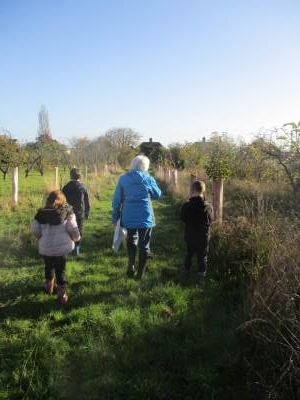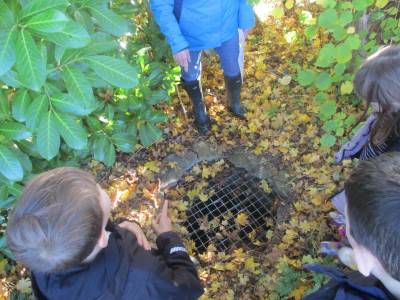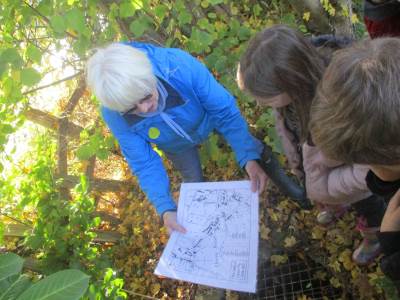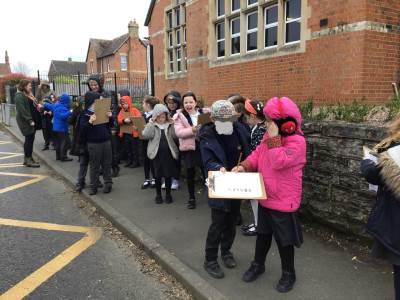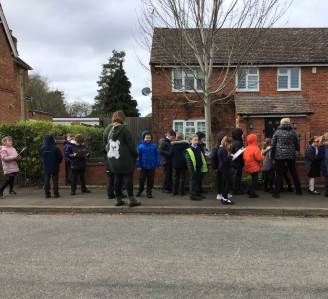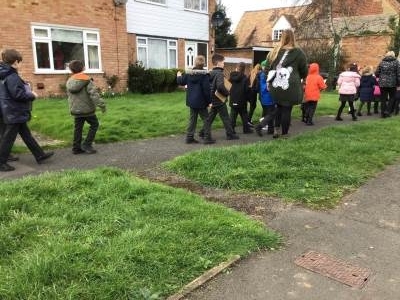Geography
/i/video/Geography_at_BFS_LQ.mp4
Badsey First School believes that a high-quality geography curriculum will inspire curiosity and fascination about the world and its people that will remain with children through learning and life. It will help pupils to deepen their knowledge and understanding about a range of places, people, resources and environments, together with an understanding of the interaction between the Earth’s key physical and human processes, landscapes and environments.
At Badsey First School, aspiration is at the core of the Geography Curriculum. It provokes and answers questions about the natural and human world, using different lines of enquiry to view them from different perspectives. Children are encouraged to reflect on their own place in the world, their values and their rights and responsibilities to other people and our planet as a whole.
Through our Geography Curriculum, pupils investigate a range of places – within Britain, Europe and the wider world – to help develop their knowledge and understanding of the Earth’s physical and human processes and features. We are committed to providing our pupils with enriching opportunities to investigate and make enquiries about their local area within Badsey, Worcestershire and the wider area, so that they can develop a real sense of who they are, their heritage, and what makes our local area unique and special.
Primary National Curriculum for Geography in England
We have carefully mapped the Geography curriculum so that it is progressive and children build upon their learning. Unit guides support teaching with core knowledge, disciplinary knowledge and vocabulary clearly defined.
Discover more about our Geography Curriculum at Badsey from the documents below:
Geography Curriculum Progression
Geography in the Early Years
The early learning goals at EYFS aim to guide your child onto make sense of their physical world and their community by exploring, observing, and finding out about people, places, technology and the environment. It may seem strange to think about your 4 or 5 year old child as a geographer. However, the years from birth to age five provide a first opportunity to see how your child interacts with their environment — and how the environment influences them.
Geography in Key Stage 1 (Years 1 and 2)
Geographical vocabulary is a major focus in Years 1 and 2 as the children begin to develop an understanding of where they live and compare this to another local area and contrast it to somewhere outside of Europe. They will learn about weather patterns in the United Kingdom and hot and cold areas of the world. They will use ICT, world maps, atlases and globes, simple compass directions, aerial photographs and plans, as well as simple fieldwork and observational skills. Immersion is the key!
Geography in Key Stage 2 (Years 3, 4 and 5)
There are four core components to the Geography curriculum in Key Stage 2. Our aim is to ensure that the children have the chance to build on their geographical understanding from Key Stage 1 and use this to further develop their knowledge of our planet and the people on it:
Location knowledge
Your child will use maps to focus on Europe, North and South America, concentrating on regions, key physical and human characteristics, latitude, longitude, countries, and major cities. They will also work on locating the counties and cities of the United Kingdom, and start to explore their human and physical characteristics.
Place knowledge
Children will also examine geographical similarities and differences by comparing the geography of a region of the United Kingdom with a region in a European country, and with a region in either North or South America.
Human and physical geography
Your child will be taught to describe and understand key aspects of geography, for example: climate zones, rivers, mountains, volcanoes, earthquakes, the water cycle, types of settlement, economic activity and the distribution of natural resources.
Geographical skills and fieldwork
Your child will use maps, atlases, globes, digital/computer mapping to locate countries describe features studied. They will use the eight points of a compass, four and six figure grid references, symbols and key (including OS maps) to build their knowledge of the UK and wider world. They will use sketch maps, plans, graphs and digital technologies to present, observe, measure and record data.
Fieldwork at Badsey
Supporting your child at home
The curriculum content may appear daunting, but don’t panic — you are already an accomplished geographer! Your daily life constantly provides you with rich geographical experiences, information and understanding. You think and act geographically, often without realising it. It comes naturally … as you navigate your way around your home and neighbourhood; as you make sense of local and world news; as you respond to the weather forecast, as you decide on a holiday location and how to get there.
When out and about in your local area, you can help your child geographically by chatting about local physical features, attractions and activities. You might even like to develop this idea by asking them to provide a tourist guide for their local area for visiting relatives.
On a journey, you can share the road map or map phone app with your son or daughter so they can follow the route while you talk about where you are going. Alternatively, ask them to draw a map of their journey to school or the local shop, including any natural or man-made features along the way.
Holidays are an ideal opportunity to compare the location with their home area — you might ask your child to talk through five similarities and differences, for example. Holidays also provide an opportunity for a museum visit or a trip to a tourist attraction.
Closer to home, use anything at your disposal! Magazines, TV, films and even some computer games can provide your child with a view of distant places. They enable your child to be transported instantly to another place. Prompt their thinking with questions, such as: What might the weather be like in this place? Why might the road have been built where it is? The list of questions is endless and will lead to all sorts of discussions which will really help to develop curiosity about, and understanding of, the world.







